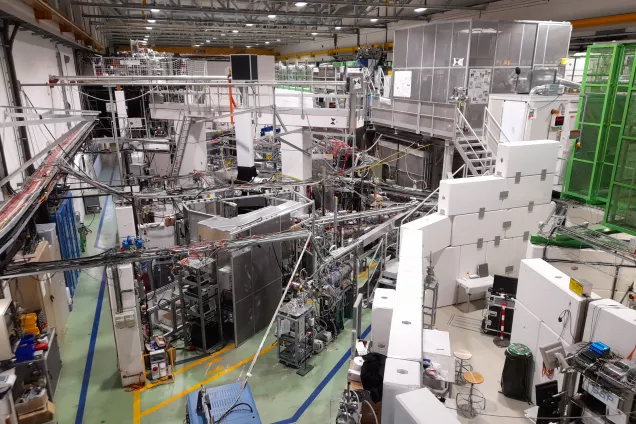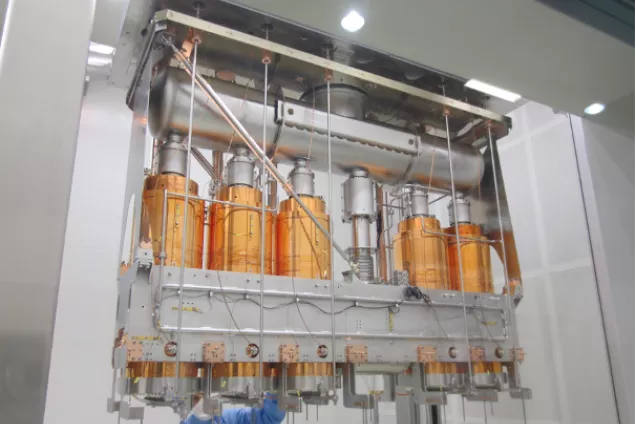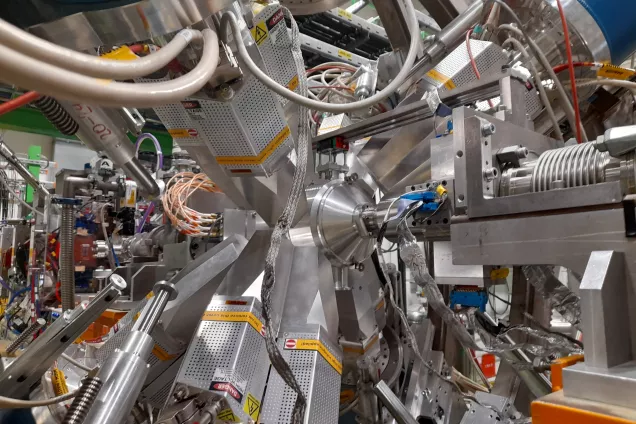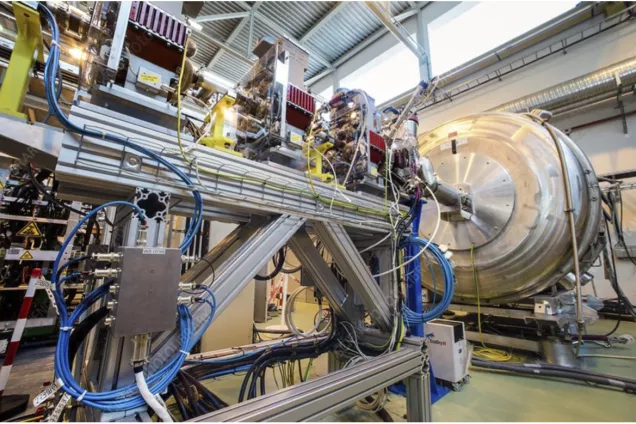The ISOLDE experiment
The experiments at ISOLDE cover questions over a variety of fields stretching from nuclear physics, nuclear astrophysics and laser physics to solid-state physics and medical physics. Our experiments are focused on nuclear astrophysics and nuclear physics at the higher end of the provided energy range.
ISOLDE is CERN:s radioactive beam facility and provides radioactive ion beams using the Isotope Separation Online method to produce exotic beams using spallation, fission and fragmentation. Beams of more than 1000 different isotopes of 74 different elements can be produced at the facility. ISOLDE uses the proton beam of the CERN PS-booster to drive the primary targets. Beams of atomic nuclei with half-lives down into the millisecond range and with energies from 30 keV up to ca 10 MeV/u are provided for experiments.
Acceleration of the radioactive beam at ISOLDE started with the REX-ISOLDE project and developed further to include the current superconducting LINAC with the HIE-ISOLDE project. The system is world unique. It uses a Penning trap to capture and cool the low-energy beam, and an Electron Beam Ion Source (EBIS) for charge breeding, before acceleration takes place. This technology, which had significant contribution from Swedish groups, makes it possible to accelerate beams over the full mass range.
The facility includes a number of functions in addition to the radioactive beam production and the accelerators. An important part is the development of new beams, which is done in a target research laboratory with a dedicated workshop. A central part of beam production is also the development of new laser ionization schemes to enhance the purity of the beam in the production target and to reduce isobaric contamination.
Our physics program at ISOLDE focuses on atomic nuclei far from stability where we have a special interest in studying transition probabilities, nuclear shapes and wave-function compositions in exotic systems using two different methods. One the one hand, we use Coulomb excitation to measure half-lives of specific nuclear states that are of interest for precision tests of nuclear models, and on the other hand we use transfer reactions to study the wave function composition of specific nuclear states that likewise are of interest for nuclear modelling. In general terms our work is focused on understanding the nuclear strong force in the medium that the nucleus provides, which adds extra complexity to the bare nucleon-nucleon force in the vacuum. We use three different setups for these studies.
The MINIBALL gamma-ray spectrometer is used in conjunction with different types of Si-strip detectors to detect outgoing gamma-rays and charged particles in coincidence. This method allows for kinematic reconstruction, which in turn makes it possible to measure nuclear transition probabilities with high accuracy.
In addition to this we also use the ISOLDE Solenoidal Spectrometer to study transfer reactions where a single neutron is transferred to an incoming unstable nucleus in order to populate specific states to investigate the purity of their wave functions. A solenoidal spectrometer, where the charged particle coming out from the reaction spirals in the magnetic field of a superconducting magnet and its intersection point on the beam axis is measured, improves the possibility to resolve different excited states that otherwise would suffer from kinematical compression if a more standard method would be used.
Finally, we also use different configurations of charged particle detectors in a scattering chamber setup to study additional reaction mechanisms. One of our interests in that case is to study two-neutron transfer reactions using a tritium target.
Further information about ISOLDE, and the different setups can be found by following the links on the right hand side of the page.





